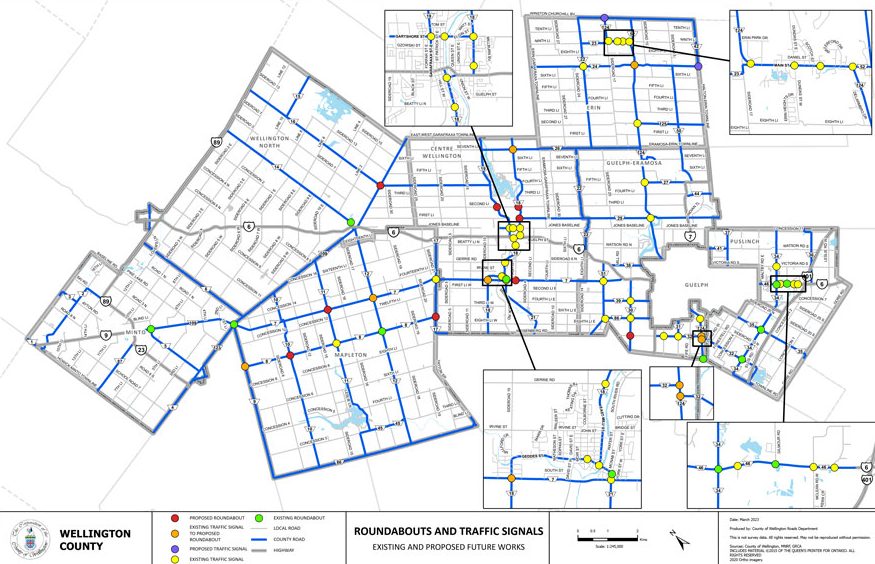GUELPH – A report on proposed intersection improvements shows two new traffic signals and 16 roundabouts in Wellington County’s future.
The report from county engineer Don Kudo was presented to county council at the April 27 meeting.
It provides information on proposed intersection improvements with respect to traffic control utilizing signalization or roundabouts.
The county currently has 38 signalized intersections and 10 roundabouts.
The report notes the future roundabout locations include seven that currently have traffic signals and three that have temporary traffic signals.
The determination of intersection traffic control takes into account the collection of traffic, pedestrian, collision and geometric data, the report notes.
“What type of control is used is determined by the collection of data, to see if results meet the criteria based on the Ontario Traffic Manual,” roads committee chair councillor Gregg Davidson told council.
“If an intersection meets the criteria county staff can then determine whether that intersection should have a roundabout as an alternative signalized intersection,” he explained.
Roundabouts are cited in the report as beneficial over signalized intersections because they:
- minimize conflict points (opportunities for collisions) for pedestrians and motorists;
- lower vehicle speeds for traffic calming and transition from rural to urban areas;
- reduce the likelihood of angle or T-bone collisions and severe injuries;
- manage higher volumes of traffic more efficiently and safely;
- improve traffic flow by increasing traffic capacity of intersections;
- reduce vehicle idling, emissions and fuel consumption; and
- reduce maintenance costs and allows for ease of winter maintenance operations.
The county’s Roads Master Action Plan notes key considerations for the use of roundabouts instead of traffic lights include:
- intersection of two county roads at higher posted speed limit locations;
- intersection geometry is not standard and sight lines are poor;
- traffic study indicating intersection capacity issues, high turning movements and high truck volumes;
- property being available to construct a roundabout;
- high collision rate; and
- need for traffic calming in a location with known safety concerns.




